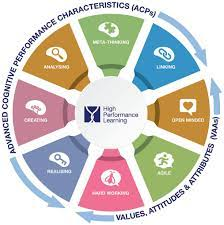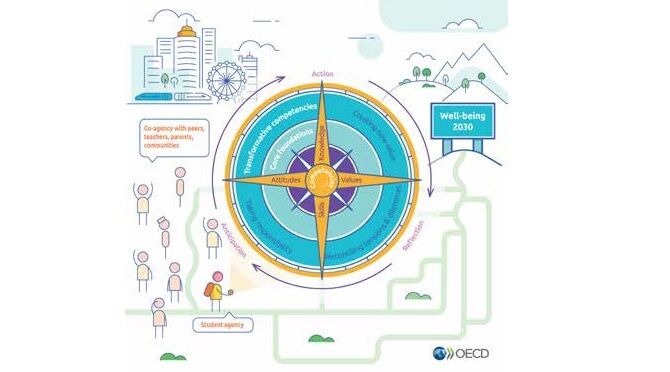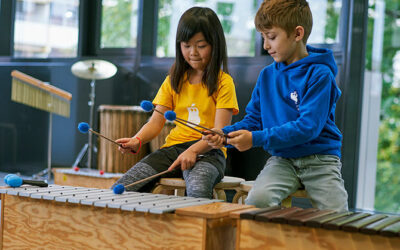Educating for the future: tomorrow’s students today
Everyone is aware that schooling is not just about now, but also about preparing children and young people for their future lives, writes Professor Deborah Eyre, founder and chair of High Performance Learning.
When it comes to schooling everyone has an opinion. Parents want their child to leave school with the qualifications they will need to give them entry into a successful adult life. Universities want students who can think for themselves, work hard and navigate their course with aplomb. Employers want new graduates who demonstrate teachability, a positive attitude, enterprising outlook, emotional intelligence, strong communication and team skills.
There is a significant degree of consensus regarding the kind of individual a school needs to develop if those individuals are to thrive in their future lives and enable us all in society to meet the challenges that lie ahead.
Global trends such as digitalisation, artificial intelligence (AI) and the climate emergency are already demonstrating that the traditional, passive approach to learning is now inadequate and that schools need to work differently if they are to respond to changes in society. There is a growing recognition of the need to rethink the goals of education to bring them into alignment.
The Organisation for Economic Cooperation and Development (OECD) has responded to this agenda by producing its Learning Compass 2030. This follows collaboration among government representatives, academic experts, school leaders, teachers and students. Their graphic neatly articulates future needs for any intelligent school or education system.
However, while thinking among global thought-leaders is advanced, the level of change required is only just starting to impact thinking among leaders in schools.
Large-scale local employers are beginning to demonstrate that they no longer need low-level skills that can now be done by machine learning. Instead, they need all their employees to be able to think at high levels and to demonstrate a higher level of competence in the core skills of numeracy and literacy, in addition to demonstrating the values, attitudes and attributes of a good employee. The traditional labour market need for unskilled workers is disappearing. Instead, schools are having to consider how to move from some students achieving at high levels to almost all students achieving at high levels. Not easy and maybe, in the minds of some, not possible.
Historically, schools have been slow to react to changes in society. Traditionally, schooling is teacher-centric. The teacher transmits knowledge to students through lectures, readings or other forms of presentation. This traditional approach is still at the core of most schooling. Perversely, the advent of digital tools such as the interactive whiteboard has served to reinforce it. It has made it easier for the teacher to project from laptop to screen and create interesting and engaging presentations in advance of the lesson to support the transfer of knowledge.
Now, school-based education (K-12) across the world is struggling to move from these very traditional approaches to learning to operate in a way that better meets the needs of both their students and other stakeholder groups. It is a significant shift in culture and practice that is required and it takes strong leadership to lead that change. Very few of even the best schools have yet made this transition. The need is recognized. Indeed, it is frequently mentioned in the school mission statement, but the will and capacity to make the change is, as yet, only evident in a small number of the most forward-looking schools.
Moving schools to the future starts with belief
At High Performance Learning (HPL) we are actively supporting schools that want to make this change. Schools that want to normalise high performance and educate students in a way that makes that possible.These schools are developing student agency in a way that is positive and productive, rather than stressful and rigid, and developing in them the values, attitudes and skills needed to thrive in university and beyond. Students in these schools are articulate, high attaining, enterprising and socially responsible. Most of all, they are quietly confident, collaborative and keen to embrace new ideas.
Making this change starts with belief. Did you know that in the last 25 years our understanding of human capability has changed beyond all recognition? In the west, we all used to believe that some people had more cognitive potential than others and that inevitably there would be high and low achievers in any classroom or school.
When that belief operates in school, individual children and young people often have their potential measured. An algorithm will then predict how they are likely to do in end-of-school exams taken five or so years later. Unsurprisingly, this is usually accurate. But it is not accurate because it was inevitable, rather because, as we know from psychology studies like the famous Pygmalion in The Classroom (Rosenthal, 1968), what teachers believe a child is capable of will determine how well they actually do. So, teacher belief is crucial to student success.
In most schools, success is rationed by teachers whose belief system is outdated and pernicious. Hence, if we want all children and young people to perform highly, teachers – and employers and university lecturers – need to believe it is possible. Crucially, they need to instill that belief in every child or young person so that they will persist when things go wrong.
The evidence that it is theoretically possible comes from neuroscience. It is proven that the brain is exquisitely plastic and that we can, and are, creating new neural pathways all the time. So, if we want more children and young people to attain highly, then we need to give them the opportunities that develop and strengthen the requisite neural pathways. We need to build brains, not think that each brain has finite potential.For employers, the encouraging data relates to our capacity to develop new neural pathways at any stage, but the two more fertile stages are during compulsory schooling, so school is where the magic should happen for most. Helping an institution to establish this culture is all about them taking action that signals their belief.
This whole approach improves student self-esteem and encourages teachability because students know that they have the capability to improve and so they are minded to do what it takes to get there. This is education done ‘with the student’ not ‘to them’ and it creates a positive, dynamic and optimistic environment. Small shifts make a big difference, but only when the culture pervades the whole institution.
Creating learners the world needs
If the goals for education are to create children and young people who can thrive in the more complex and fast-changing modern world, then as the OECD suggests education must focus on systematically developing values, attitudes and skills as much as knowledge acquisition.
Interestingly, the research on successful learners shows that cognitive success is about balancing values, attitudes and skills alongside knowledge. It is not an either-or, but a combination of the two. For a learner to achieve success, they need to master not just advanced ways of thinking, but also the necessary values, attitudes and skills. We need to stop thinking about them as separate and instead see them as interwoven.

What we all know is that this level of change does not happen without a plan. School leaders who want these competencies to be a significant feature need a way to move from ambition to day-to-day reality. HPL helps schools adopt a framework where these competencies are acknowledged as being important; where they are prominent and evident in day-to-day teaching; and where they are talked about by teachers and students. They are the universal language of teaching and learning. Students from an early age understand what each competency means. They see the importance of mastering the values, attitudes, skills and knowledge and they believe that, over time, mastery is possible for them.In short, the pathway for schools to move into this new world is established and over 100 schools in 23 countries are proving that it can be done.
HPL schools are creating the students of the future by:
- Securing a consistent culture of high expectations
- Building cognitive and lifetime success
- Galvanising students, parents and educators.
Education will be great when all schools work this way. Meanwhile, it is important to support the trailblazers.
Read Professor Deborah Eyre’s profile article for 40 Global Outstanding Women here





